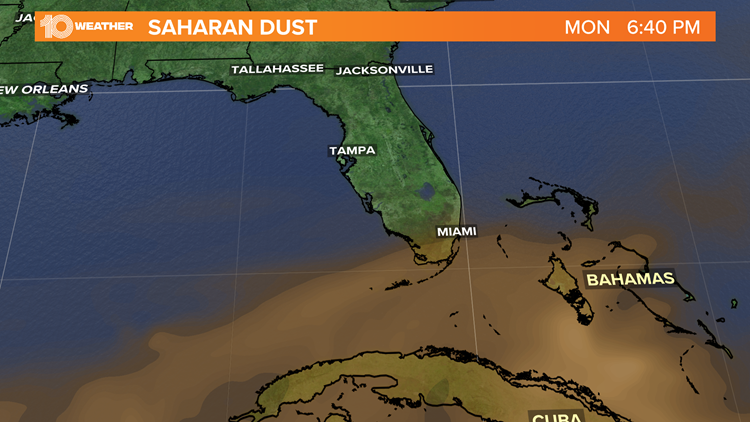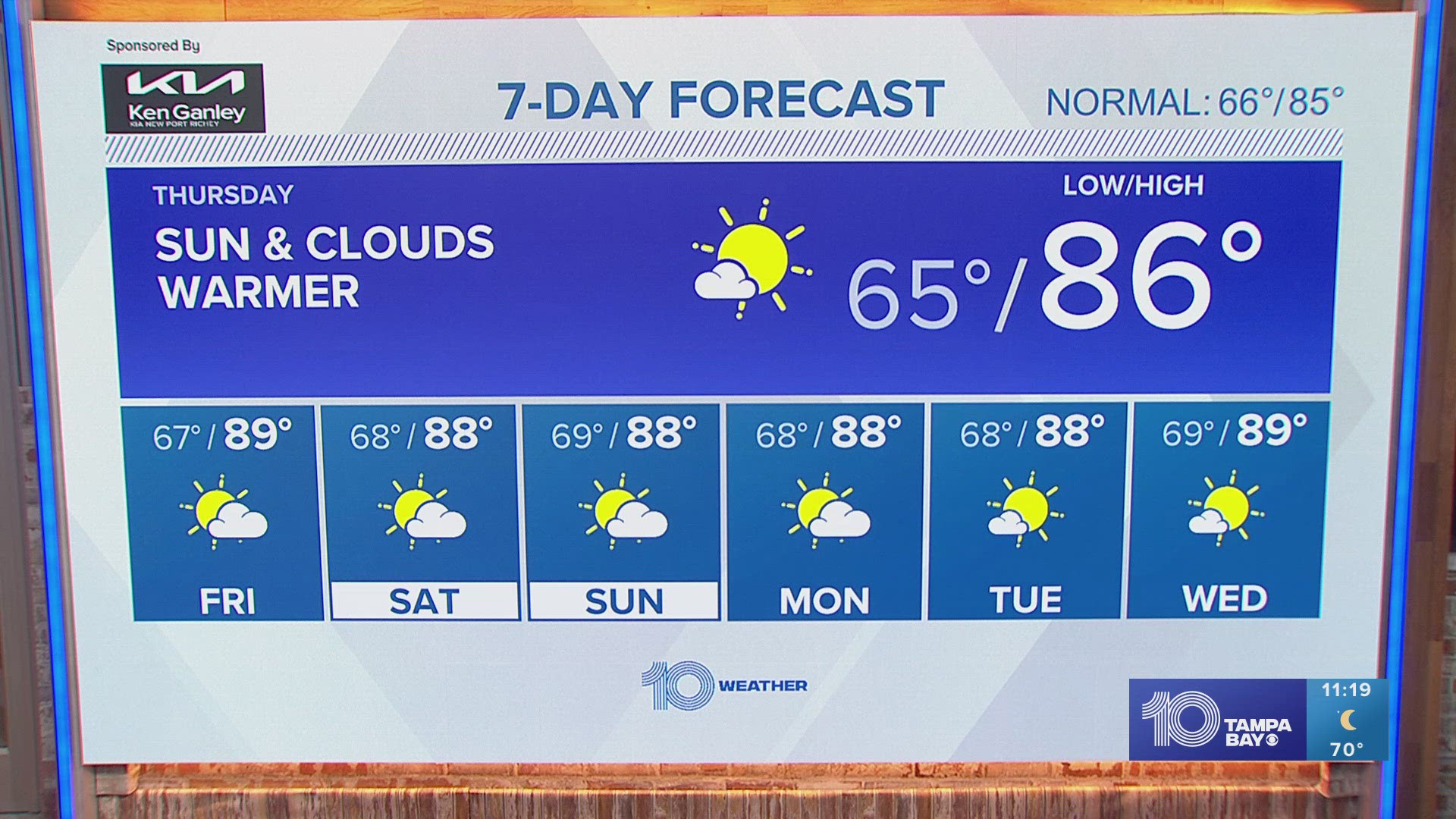A giant plume of Saharan dust is blowing into Florida this week, as it travels across the Atlantic Ocean as far as 5,000 miles all the way from the coast of Africa.
The mass of extremely dry and dusty air known as the Saharan Air Layer forms over the Sahara Desert and periodically moves across the North Atlantic, peaking in late June to mid-August every year. Some are worse than others.


These Sahara dust plumes can cause more vibrant sunrises and sunsets by scattering more of the sun’s light in the atmosphere. A greater number of dust particles can refract sunlight into a range of purples, pinks, oranges and yellows.
Large dust plumes can also cause increased air pollution, suppress storms and even contribute to red tide.
According to the South Florida Sun-Sentinel, Saharan dust can cause air quality issues through air pollution. Depending on the thickness of the dust, people with respiratory problems may need to limit outdoor activities. But Saharan dust often comes through without much impact on air quality.
The Saharan dust may also temporarily suppress rain, storms and even tropical systems by adding dry, desert air into the atmosphere. You can still have showers and thunderstorms, but the coverage will be less than if you didn’t have Saharan dust. Saharan dust may also weaken tropical cyclones such as tropical storms and hurricanes.
According to a study partially funded by NASA, Saharan dust brings nutrients, largely iron, one of the minerals found in the dust into the Gulf of Mexico.
NASA says that as the dust falls into the Gulf, it attracts a cyanobacterium, called Trichodesmium which uses that iron to convert any nitrogen in the water into a form that can be consumed by other marine organisms, including the algae that lead to red tide.
This additional biologically useable nitrogen in the water makes the Gulf of Mexico a more likely environment for toxic algae to bloom.
The Sahara Desert is huge at nearly 3.6 million square miles across the northern half of Africa. This is only slightly smaller than the continental United States.
- Grocery prices are going up: Here's how you can save
- Biden, Putin hold face-to-face summit talks
- 'Holy s---!' Hammerhead shark thrashes in ankle-deep water near beachgoers
- Some cruise lines vow to defy Florida's ban on proof of vaccination
- State attorney: 'Machete-wielding murderer' sentenced to life in prison for killing man inside Brandon grow house
- How recent rainfall could prolong red tide
►Breaking news and weather alerts: Get the free 10 Tampa Bay app
►Stay In the Know! Sign up now for the Brightside Blend Newsletter



